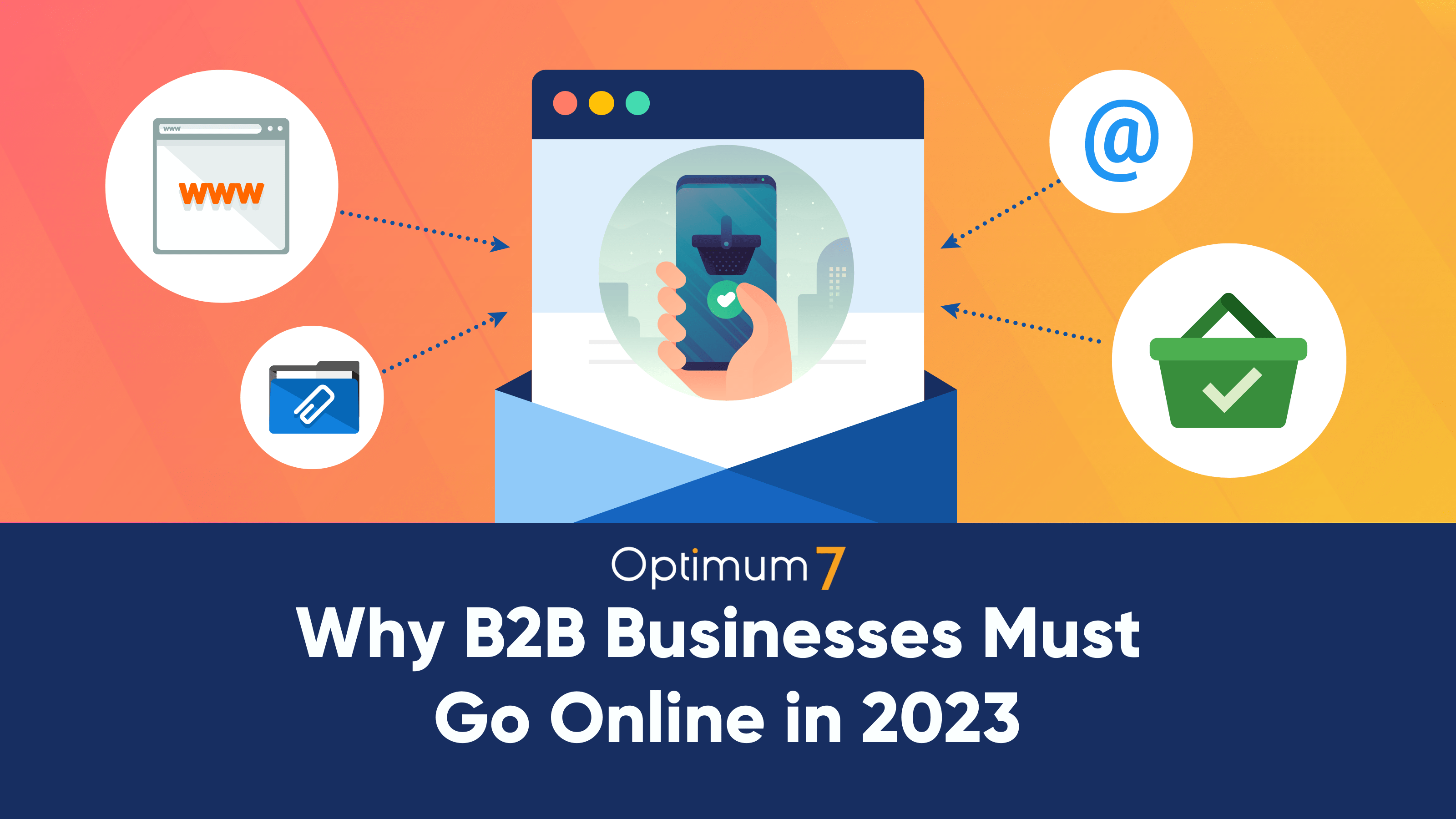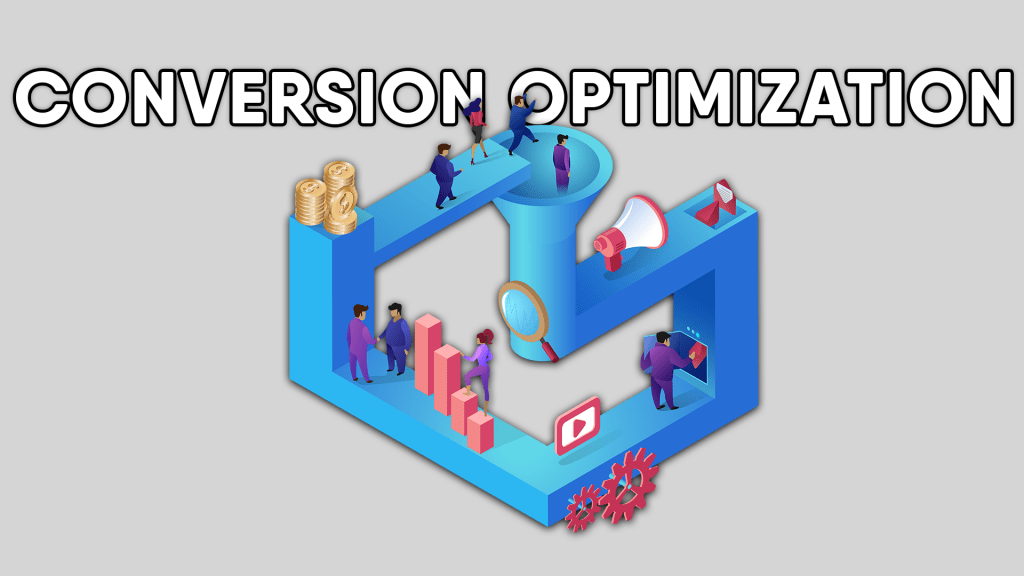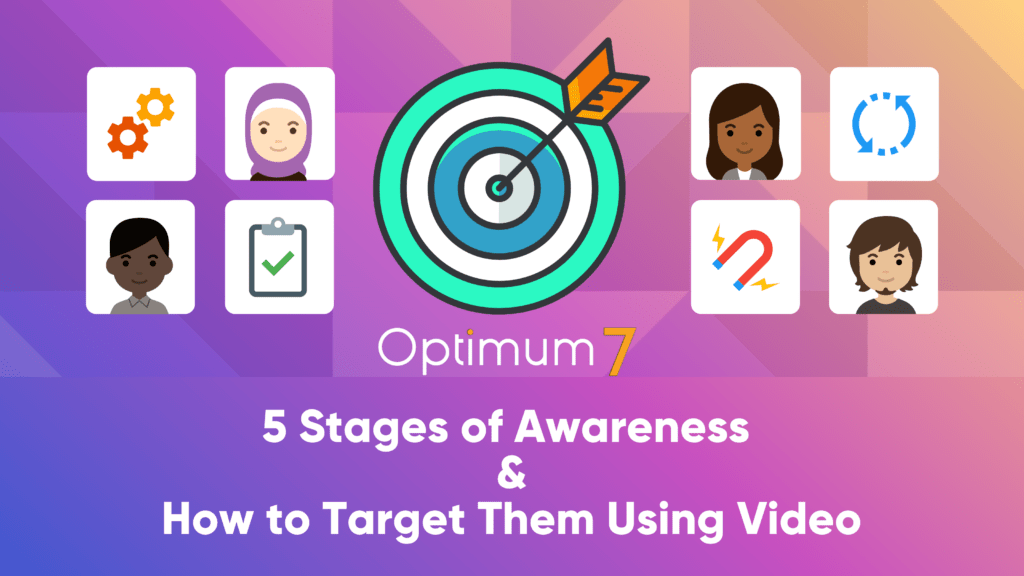In the fast-paced world of today’s digital age, businesses of all types are looking for ways to keep up with ever-changing market demands. For B2B businesses, the need to go online has never been more pressing.
With the majority of B2B buyers now conducting research and making purchases online, it’s crucial for B2B businesses to have an online presence if they want to stay competitive in 2023.
In this article, the B2B marketing and sales experts at Optimum7 reveal why your business-to-business company MUST go online in 2023. And this means everyone: manufacturers, distributors, service providers — basically every B2B business owner who believes that you cannot sell million-dollar machinery online.
Why is There Such a Huge Opportunity for B2B Online?
The answer is simple: because many of your largest competitors have already set up their businesses to sell online. Your B2B online competitors are billion-dollar companies, and they want this market share because they understand that this is the fastest-growing market.
D2C is saturated, while B2B isn’t as saturated, yet.
- 95% of B2B businesses do nothing online.
- 90% of them do not do any type of marketing online.
- 99% of B2B retailers don’t have a store or any kind of e-commerce visibility online.
Now here’s the real question: why is there such a huge opportunity in B2B online?
1) Customers with High Lifetime Value
B2B client values are higher, meaning that if you acquire a B2B customer, they are going to be your customer for a long time. The lifetime purchasing potential of that customer is very, very valuable.
They’re not going to come and buy a piece of machinery from you. They’re not going to come and buy a bunch of parts from you and just have it be one order.
They’re going to keep coming back and coming back because they are selling this directly to consumers and they need a supplier. So the lifetime value is higher.
Therefore, you don’t have to acquire that many new customers.
You just need to steal market share from your competitors.
2) High Average Order Volume (AOV)
B2B AOV is higher. The average order volume for a B2B transaction is much higher.
If you’re selling machinery or parts, your average order volume is going to be anywhere from $500 to possibly thousands of dollars.
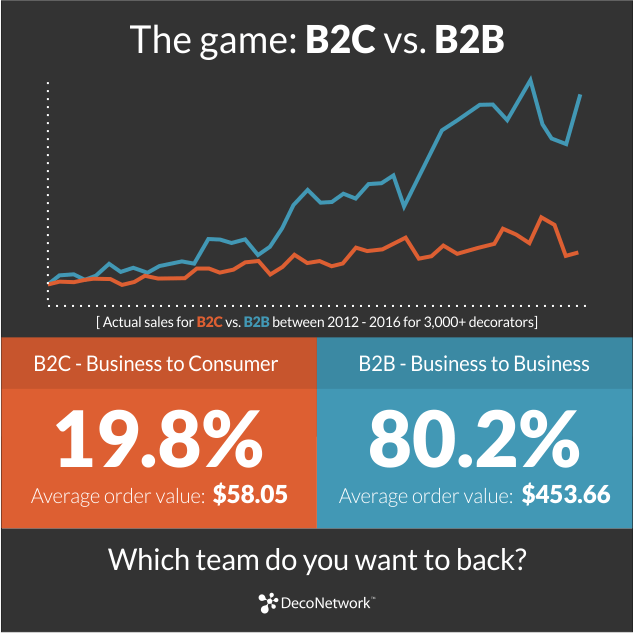
Do you know what the average cost-per-click for the term ‘t-shirt’ is online? It’s $20. That’s $20 per click that you would pay Google AdWords to show up for that keyword, ‘wholesale T-shirt,’ or any combination.
Do you know what the average order volume for a T-shirt company that’s doing D2C is? $80 to $120. Do the math. So if you get a hundred clicks at $20 a pop, that’s $2,000 that you’ve spent.
The average e-commerce conversion rate is 3%.
So you get three purchases, let’s say, at $120 average order volume. You just spent $2,000 to make $360.
This doesn’t make sense. What these T-shirt companies are going after is lifetime value, because they acquire one customer and they won’t make money from the first few orders, but they start making money after months.
With B2B, it’s the complete opposite.
The majority of B2B businesses are not advertising online, so their average CPC is going to be maybe $5. Now let’s do the math here. Let’s say you get a hundred clicks.
That’s $500. Let’s say your conversion rate is very, very low. Let’s say 1%. It means that you’re going to get one order for that $500.
But your average order volume, if you’re selling machinery, could be up to $5,000. If you’re selling car parts, it could be $500 and up. So B2B businesses have the capability to make money on the first order because they have high average order volumes.
3) Wider Acquisition Net
B2B acquisition net is wider, meaning a majority of your competitors are not advertising online. They are not doing any content online. They are not doing e-commerce online.
So that gives you a bigger market share. If you don’t believe that your business should be online, just look at uline.com and what they spend on Google. Just look at grainger.com and see what they spend on Google.
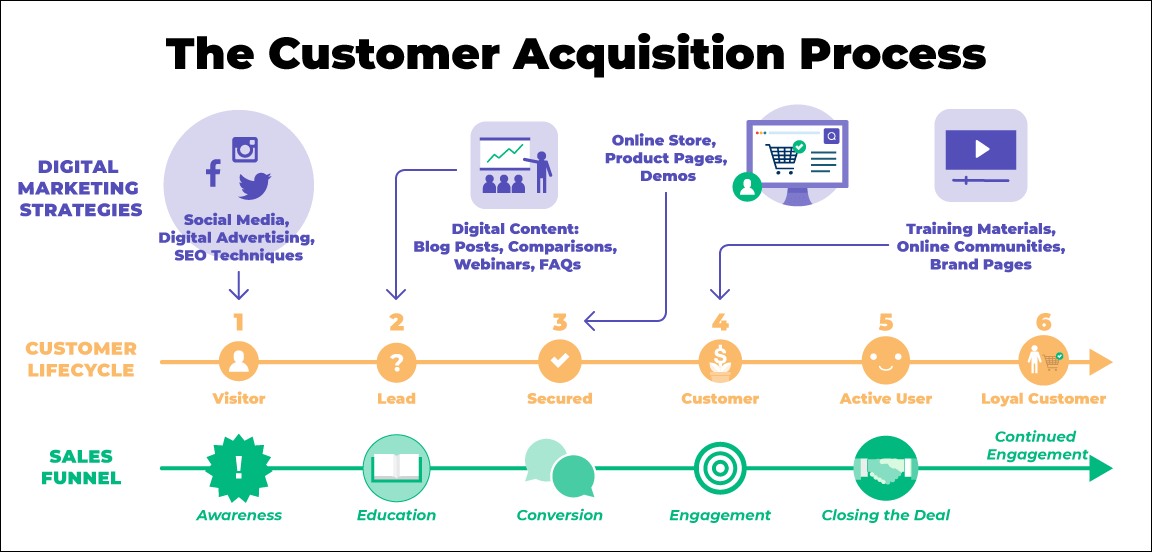
Look at any one of our hundreds of customers that sell machinery, industrial equipment, and manufactured equipment online. Go to our case studies section on Optimum7 and see what volumes they’re doing online.
4) Little-to-No Competition in the Market
The market for B2B online is not saturated like B2C. Type in the keywords for any household product or any electronic online. Type in ‘T-shirts’, ‘sweatshirts’, or ‘pants’ online. It’s incredibly saturated.
You’re going to see Amazon, Walmart, and Etsy. Type any furniture product online. It’s all saturated. B2B is not like that because, again, 90% of these businesses do not advertise online.
What are the Myths of B2B eCommerce?
Now, over the past few years, there have been all kinds of myths when it comes to B2B e-commerce businesses finding excuses not to take their business online.
Let’s bust those myths…
1) “I’ll just focus on Amazon, Walmart, and Wayfair.”
One of the things that we hear from customers often is that they’d prefer to focus on marketplaces like Amazon, Wayfair, and Walmart. They believe that they won’t have to do any marketing on these marketplaces because the audiences are already there to buy.
But what they don’t understand is they’re giving 20% of their revenue to those marketplaces. This just doesn’t make any sense.
You control manufacturing and the use of your brand name, but just because you’re too lazy to do any marketing, you let go of 20% of your revenue. These marketplaces are not bad, but they also shouldn’t be your only storefront, and in fact…
We’re not saying that you shouldn’t sell on these marketplaces.
It’s a nice source of cash flow, but it’s also a great opportunity for you to increase your brand visibility and awareness. That way, you can pull those audiences to your website and to your own properties and keep that 20% in your pocket.
Think about what your annual revenue is from those marketplaces, take 20% of that, and imagine if you had that money in your bank account today for the past five years. That’s millions and millions of dollars.
It’s a myth that these marketplaces are inherently better.
2) “I’ll just prioritize distribution.”
B2B businesses, manufacturers, and distributors like to focus on their distribution channels, manufacturing their products, and R&D. By doing this, they neglect e-commerce on their own sites — and that’s wild.
Because you have distributors, you could create a distributor network, allowing your distributors and your resellers to buy at different tiered pricing levels on your own website.
You could possibly fire 90% of your sales team — if not all of them — because you’re paying those salaries for no reason. Your buyers are going to buy from you regardless.
Where does individual attention to customer service come into place?
Don’t worry about that. AI is going to take care of that in the next two to five years. This is happening whether you like it or not.
Refusing to maintain an e-commerce site in 2023 is like trying to acquire Gen-Z customers using direct mail.
3) “I don’t want to upset my reseller base.”
B2B business owners don’t want to upset their reseller base. If they sell on their own websites, resellers are going to be upset and they won’t buy from them anymore.
This is another irrational concept. When you implement B2B re-ordering functionalities on your website, all you’re doing is providing more value to your B2B resellers.
Of course, you don’t want to compete directly with your resellers by selling at the same price on your website as you sell to your resellers. There’s an entire execution plan that you need to follow so that you don’t upset your reseller base.
It makes sense in theory, but in practice, it just doesn’t.
You could be carrying at least 5%-10% in overhead if you do not have a B2B e-commerce ordering system on your website, ready for your resellers to purchase whenever they’d like.
Furthermore, you’re not branding yourself enough because, regardless of what happens, you don’t want to rely on your resellers for business forever. Who do you think those resellers are loyal to? You don’t think that your competition is targeting those resellers?
So which one would you rather invest in: your brand visibility or your reseller base? Of course, you want to invest in both of them, but most B2B businesses completely ignore their brand.
“Okay. This is all nice and beautiful, but how do we achieve this?”
Let’s say that you’re a B2B business owner with 1000 products that you manufacture or distribute. You have a placeholder website, but otherwise, you’re doing nothing online.
What’s the first step for you to go online?
How to Create a B2B eCommerce Website
First things first, you’re going to need an e-commerce platform and an e-commerce ordering structure. To set up your e-commerce structure, you need a list or a database of your products, and this database must include certain fields, like:
- Name
- Product Description
- Price
- Wholesale Price
- Different Pricing Tiers
Upload the image of your products to your e-commerce site. Integrate your merchant account where you can charge credit cards, and you’re in business. This could happen in as short as 30 days.
Now here’s the kicker.
We empower B2B businesses to go online with this very basic execution that could be completed for around $10,000.The moment their site goes live, their business starts earning $20,000-$50,000 in additional monthly revenue, and they’re all shocked.
They’re like, “Oh, wow. We did not know that we could do this much business online.” But their customers are already there.
What’s the second step? You just need to add the functionality.
Essential Functionalities for B2B eCommerce Websites
As a business, having a robust and user-friendly e-commerce website is crucial for reaching and serving your B2B customers.
1) Product Configurator Functionality
70% of B2B businesses have custom products, which require a custom ordering process. You need the product configurator functionality.
If you’re selling a specific machinery part and it has different configurations that are all conditional options, you need this functionality.
We have a lot of clients who have this. As an example, OC Pneumatics.
OC Pneumatics is a B2B business with two million SKUs on its site and that makes over $10 million in annual revenue. If you go to ocpneumatics.com and look at the part builder that they have, you’ll see that every single combination of an option for that part is displayed as an SMC product.
Another product configurator you can look at is EcoEnclose.
We built this custom box ordering module for ecoenclose.com where a user can select differently sized boxes. They have different pricing options, they can brand their boxes, and they generate millions of dollars from this one product page on an annual basis.
So this stuff works.
2) Custom Quoting Functionality
A lot of B2B businesses create custom quotes. A custom quoting functionality is extremely important because your clients could have thousands of employees, several purchasing managers, and many different decision-makers.
They might have different flows for buying equipment or buying products. So a generated quote allows your product to be in front of different decision-makers in that organization, and to flow through that sales cycle a lot faster.
This functionality is really simple.
We built this functionality for ocpneumatics.com and schooloutlet.com. You go to a product page, add items to your cart, and if the value of that order is over a threshold amount at the cart level, a little popup displays “create a quote” or “request a quote.”
When somebody clicks on that, it generates a PDF file and emails it back to the customer. It emails you as the business owner, and your admin, saying that this person requested a quote.
In your admin panel, you can choose to remove that notification, or to a specific salesperson to continue dealing with that quote. It makes the sales cycle a lot faster, and a lot more efficient.
3) Various
There are many other functionalities, like Multi-Add-to-Cart that enables your clients to add multiple items to their carts. A B2B customer who’s purchasing 20 products from you isn’t going to add to cart, go back, add to cart, go back — they’re just not going to do that.
So the more efficient you make your ordering processes for your resellers, the more orders you’re going to get.
For example:
If you’re a bartender at a very busy bar, your primary objective is to serve that first drink as fast as possible. Whenever that drink is over, serve the next drink and the following drink as fast as possible.
If you’re more efficient, the customer is going to spend more money. If you make them wait for the duration of the time they are there, they’re purchasing fewer drinks.
If they purchase fewer drinks, it means you’re making less on your 15% to 20% tip. An e-commerce business — B2C or B2B — works in the same manner exactly.
At the end of the day, it’s your call.
In conclusion, the benefits of going online for B2B businesses in 2023 are clear. With the majority of B2B buyers conducting research and making purchases online, it’s imperative for B2B businesses to have a strong online presence.
The opportunity for B2B online is vast, with a high lifetime value for customers, high average order volume, wider acquisition net, and little-to-no competition in the market. With 95% of B2B businesses not yet advertising online, now is the time to act and secure your market share.
By taking advantage of the opportunities presented by e-commerce, B2B businesses can stay competitive, grow their customer base, and increase their revenue in 2023 and beyond.

